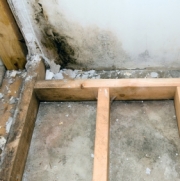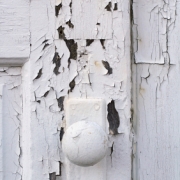If you're unfamiliar with the title of this article, or this important subject matter, don't feel bad – you're not alone. Confusion and a lack of awareness is the rule, rather than the exception, when it comes to the federal Environmental Protection Agency's (EPA’s) new Renovation, Repair, and Painting (RRP) rule, which totally redefines the way much of home remodeling is conducted. It centers on the control of dust from lead paint created from during RRP, not the elimination of the lead itself. The RRP rule is monumental – in its complexity, in the nature of the changes, and in the cost involved in compliance. Here's the EPA's explanation in a nutshell: “Under the rule, beginning April 22, 2010, contractors performing renovation, repair, and painting projects that disturb lead-based paint in homes, child care facilities, and schools built before 1978 must be certified and must follow specific work practices to prevent lead contamination.”

02 80 00 Facility Remediation
Mold Remediation
A popular but false notion is that mold (a fungus) only grows within dark, wet spaces inside a building. In actuality, mold spores can be carried from the outdoors into a building by people, ventilation systems, and even pets and open windows. Once inside, spores can mature into visible colonies if proper conditions are met -- moderate temperature, available moisture, and a food source.
Lead-Based Paint Remediation
This topic includes information related to lead-based paint remediation. Lead-based paint remediation is the abatement and disposal of lead materials. Abatement includes removal of lead materials and encapsulation. Assessment will define the amount and condition of lead materials, in addition to providing guidance for remediation.
Asbestos Remediation
This topic includes information related to asbestos remediation. Asbestos remediation is the abatement and disposal of asbestos material. Abatement includes removal of asbestos material, by hand or vacuum and encapsulation. Assessment will define the amount and condition of asbestos, in addition to providing guidance for remediation.



